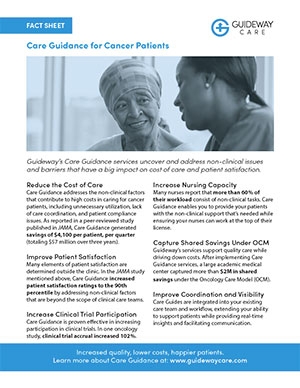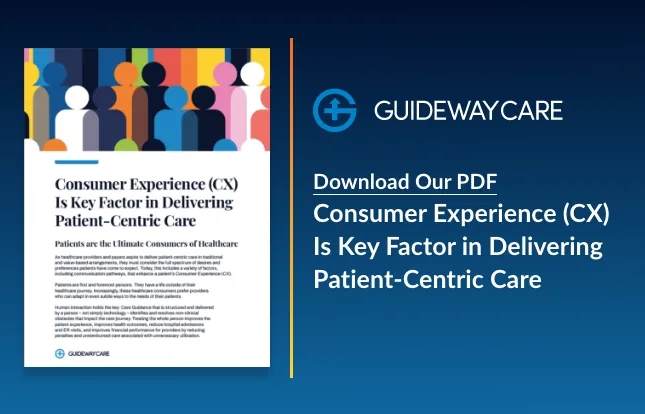RO-APM: What Providers Need to Know

CMS recently announced the Radiation Oncology Model (RO Model or RO-APM), a mandatory, episode-based payment model for radiotherapy (RT) services. CMS states that the goals of the model are to “improve the quality of care for cancer patients receiving radiotherapy…and move toward a simplified and predictable payment system.” The new radiation oncology alternative payment model (APM) is projected to save CMS $230 million over the next five years.
Why the RO Model Matters
Medicare has been heading towards alternative payment models for cancer for several years, notably with the Oncology Care Model (OCM) and its soon-to-be-launched successor model, Oncology Care First (OCF). As Medicare and other large payers continue to focus on the differences in cost across sites of care, as well as the overall push for value over volume, the move towards value-based payment models will accelerate. As noted by Anne Hubbard of American Society for Radiation Oncology (ASTRO), radiation oncologists who plan to be paid through other models such as Fee For Service (FFS) or the Medicare Physician Fee Schedule should anticipate that “rate stability and the fee schedule is likely to go away…once the RO Model is operationalized.”
The RO-APM also addresses a major criticism raised regarding OCM and OCF. Namely, that these models are medical oncology-centric, and may unintentionally incentivize providers to delay or decrease referrals to more expensive therapies such as RT based on cost alone. The RO Model would take the first step in correcting such an incentive by being “modality agnostic” and only holding providers accountable for the costs which are actually under their control.
In addition to being a preview of payment changes to come, the new radiation oncology APM will impact a sizable percentage of providers within just a few months. The first performance period of the model (originally scheduled for January 1, 2021, but delayed per CMS), will begin July 1, 2021. The model will encompass more than 30% of all eligible Medicare fee-for-service radiotherapy episodes nationally, and include nearly 1,000 practices.

Guideway’s Care Guidance services support quality care while driving down costs. After continuing Care Guidance services, a large academic medical center captured more than $2M in shared savings under OCM.
Download the fact sheet on Care Guidance for cancer patients to learn more.
[pardot-form height=”170″ id=”20312″ title=”Guideway Care Cancer Fact Sheet Download”]
About the RO-APM
CMS began exploring the possibility of an episode-based payment model for radiotherapy Services in 2014. Congress asked for a report on developing such a model in 2015; the report was published in November 2017. The report identified three key reasons why the time was right for RT payment and service delivery reform:
- Lack of site neutrality
- Providers currently incentivized for volume over value
- Coding and payment challenges
The RO Model was announced on September 18, 2020 as part of the final rule titled “Specialty Care Models to Improve Quality of Care and Reduce Expenditures.” The RO Model, along with the simultaneously announced End-Stage Renal Disease (ESRD) Treatment Choices (ETC) Model, will be implemented and tested as a mandatory payment model under the Center for Medicare & Medicaid Innovation (CMMI).
Participants
The RO Model requires participation from RT providers and RT suppliers that provide RT services within randomly selected Core-Based Statistical Areas (CBSAs). A participant can be:
- A physician group practice (PGP)
- A freestanding radiation therapy center
- A hospital outpatient department (HOPD)
A full list of participating zip codes can be found here.
Participants can participate in the RO-APM as:
- Professional Participants that provide only the RT services that may be furnished by a physician
- Technical Participants that provide only the RT services that are not furnished by a physician, including the provision of equipment, supplies, personnel, and costs related to RT services
- Dual Participants that provide both the professional and technical components of RT services
See the full description of each participant type here.
While participation in the RO Model is mandatory, the final rule does exempt certain entities.
Included Services
The episode-based payment covers radiotherapy services furnished in a 90-day episode for 16 cancer types. Included services are:
- Consultation
- Treatment planning
- Technical preparation and special services
- Radiation treatment delivery services
- Treatment management
For a full discussion of included services, see the final rule from CMS.
The cancer types included in the model are those that CMS describes as “commonly treated with radiation” and which have “associated current ICD-10 codes that have demonstrated pricing stability.” The included cancer types are: anal, breast, head and neck, pancreatic, bladder, cervical, liver, prostate, lung, upper GI, colorectal, and uterine cancers; lymphoma, CNS tumors, bone metastases, and brain metastases. The RT modalities included in the model include brachytherapy, image-guided radiation therapy, stereotactic radiosurgery, stereotactic body radiotherapy, proton beam therapy, intensity-modulated radiotherapy, and 3-dimensional conformal radiotherapy.
Episodes are triggered by the occurrence of a treatment planning service followed by a radiation treatment delivery service within 28 days of the treatment planning service.
Performance Period
The RO Model performance period is five years. The model is scheduled to start July 1, 2021.
Payments
Participants will receive site neutral, modality agnostic, episode-based payments for RT services furnished within a 90 day period of care, instead of regular FFS payments, throughout the model performance period. Payments will be:
- Paid prospectively, with half paid when the RO episode is initiated, and the second half paid when the episode ends.
- Split into a professional component (PC) payment for RT services that may only be furnished by a physician, and a technical component (TC) payment for the included RT services that are not furnished by a physician, including provision of equipment, supplies, personnel, and costs related to RT services. This is meant to reflect the fact that RT professional and technical services are sometimes furnished by separate providers or suppliers.
- Determined by national base rates, trend factors, and adjustments for each participant’s case-mix, historical experience, and geographic location.
- Further adjusted by a discount factor applied by CMS. This is a set percentage by which CMS reduces an episodic payment amount in order to reserve savings for Medicare and which may also reduce beneficiary cost-sharing. The discount factor for the PC is 3.75% and the discount factor for the TC is 4.75% The payment is also adjusted for:
- Withholds for incorrect payments (1% for PC and TC)
- Quality (2% for PC)
- Patient Experience (1% for TC starting in 2023)
Participants in the RO-APM will have the opportunity to earn back some of the adjustments applied by Medicare, including:
- All or some of the incorrect withhold based on the amount of incorrect payments during the previous performance year.
- A portion of the quality and patient experience adjustment, based on clinical data reporting, quality measure reporting and performance, and the CAHPS Cancer Care Radiation Therapy Survey.
Though CMS states that the discount in payments may result in lower overall costs for beneficiaries than they would experience under FFS payment arrangements, beneficiaries are still subject to the same cost-sharing requirements as under traditional payment systems (typically 20 percent of the Medicare-approved amount for services).
How the RO-APM Fits Within the Quality Payment Program
The RO Model is considered an Advanced APM (APM) and a MIPS APM. The RO Model requires participants to:
- Annually certify their intent to use CEHRT
- Include quality measure performance as a factor when determining payments
- Bear more than a nominal amount of financial risk.
Participants who don’t qualify for the QP threshold may be required to report to MIPS, and will be considered participants in a MIPS APM.
Additional Resources on the RO-APM:
- CMS: Model Overview
- CMS: Model Fact Sheet
- CMS: Model FAQs (published 10/2/20)
- CMS: Participating Zip Code List
- Radiation Oncology APM: Why Us? Why Now? (International Journal of Radiation Oncology)
Editor’s note: this article has been updated with additional information as of October 21, 2020.
The Radiation Oncology Alternative Payment Model (RO-APM) represents a significant shift towards value-based care in radiotherapy services. By implementing this model, CMS aims to enhance care quality and establish a more predictable payment system. This transition will impact a broad spectrum of healthcare providers, including hospitals and health systems, oncology practices, risk-bearing entities, payers, bundle participants, and behavioral health providers. To navigate this evolving landscape successfully, it is crucial for all stakeholders to stay informed and adapt to the new requirements and opportunities presented by the RO-APM.
Contact Us Today To Learn How We Can Help
"*" indicates required fields




